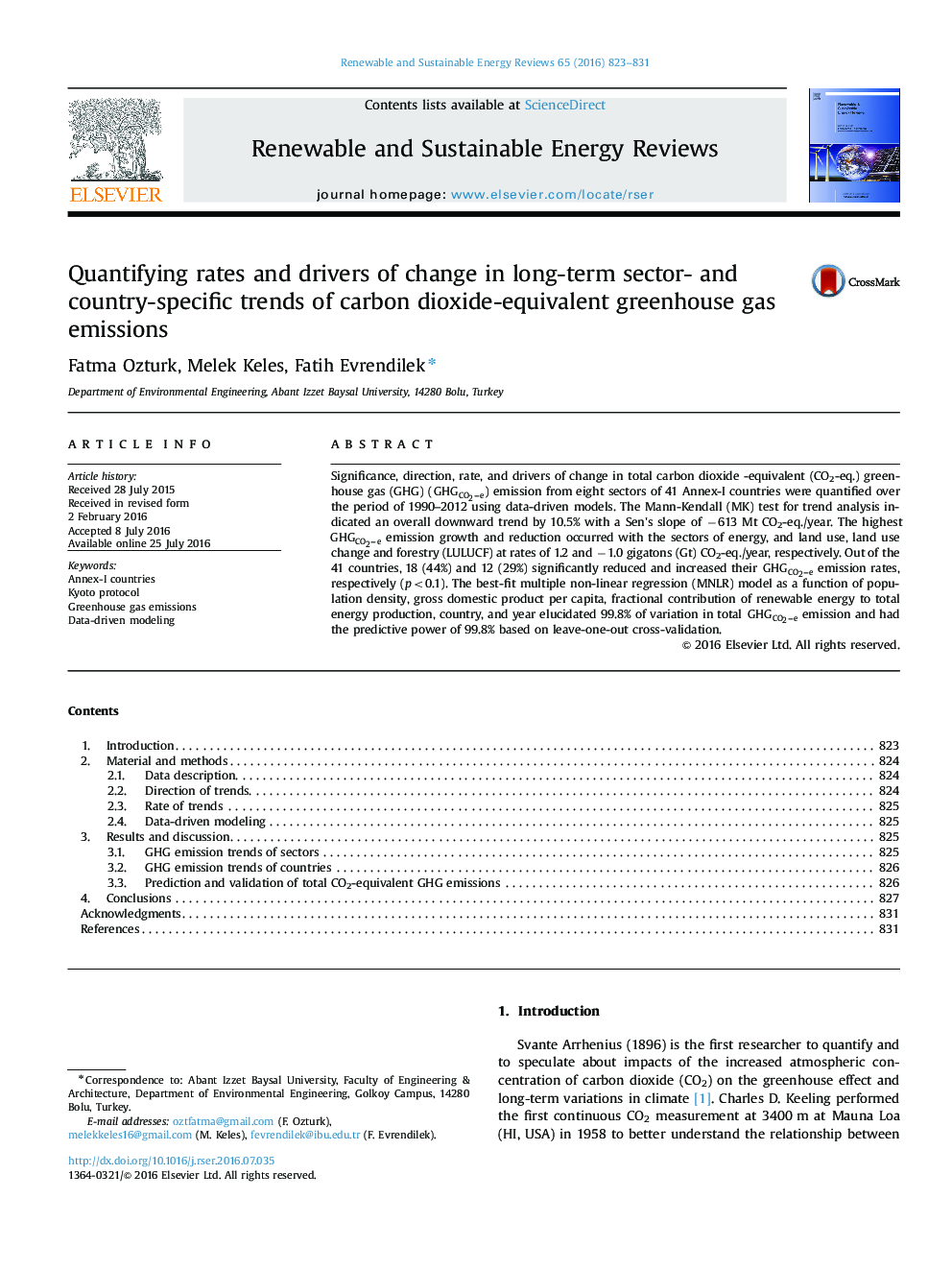| Article ID | Journal | Published Year | Pages | File Type |
|---|---|---|---|---|
| 8113056 | Renewable and Sustainable Energy Reviews | 2016 | 9 Pages |
Abstract
Significance, direction, rate, and drivers of change in total carbon dioxide -equivalent (CO2-eq.) greenhouse gas (GHG) (GHGCO2âe) emission from eight sectors of 41 Annex-I countries were quantified over the period of 1990-2012 using data-driven models. The Mann-Kendall (MK) test for trend analysis indicated an overall downward trend by 10.5% with a Sen's slope of â613 Mt CO2-eq./year. The highest GHGCO2âe emission growth and reduction occurred with the sectors of energy, and land use, land use change and forestry (LULUCF) at rates of 1.2 and â1.0 gigatons (Gt) CO2-eq./year, respectively. Out of the 41 countries, 18 (44%) and 12 (29%) significantly reduced and increased their GHGCO2âe emission rates, respectively (p<0.1). The best-fit multiple non-linear regression (MNLR) model as a function of population density, gross domestic product per capita, fractional contribution of renewable energy to total energy production, country, and year elucidated 99.8% of variation in total GHGCO2âe emission and had the predictive power of 99.8% based on leave-one-out cross-validation.
Related Topics
Physical Sciences and Engineering
Energy
Renewable Energy, Sustainability and the Environment
Authors
Fatma Ozturk, Melek Keles, Fatih Evrendilek,
